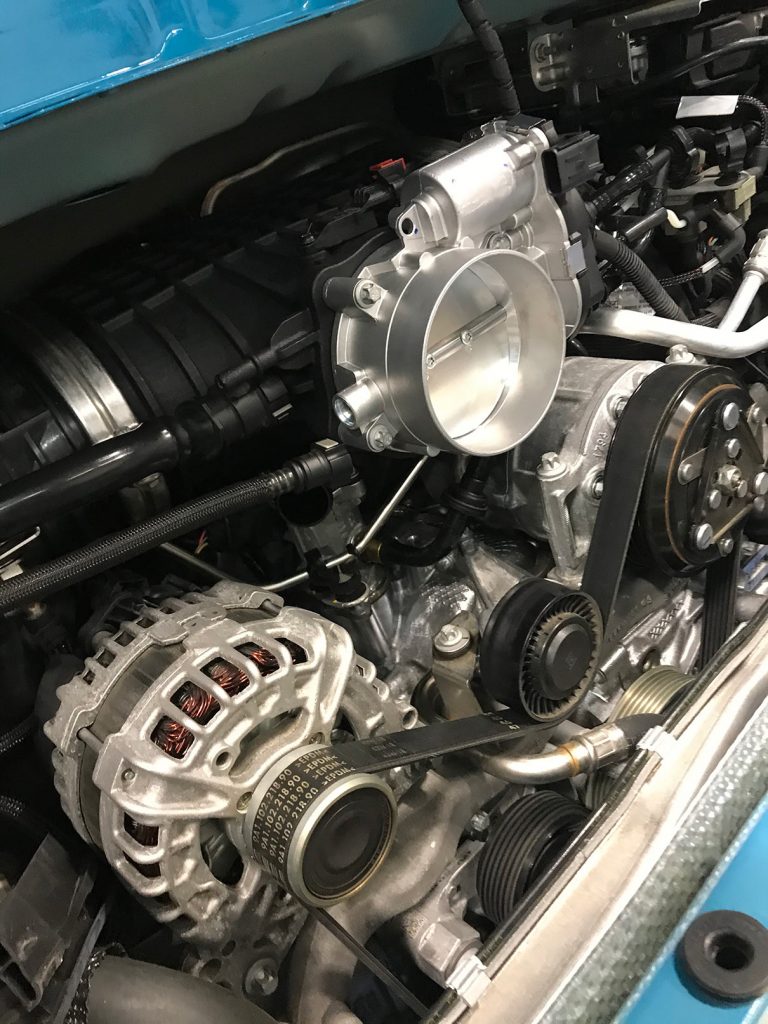An Inside Look at Race Car Safety and In-Car Protection
It’s never too early—or late—in your build to think about safety. When you’re racing at high speeds, you need to think about protecting your car and yourself. Since the early days of motorsports, safety has only gotten better. Now, racers can survive major crashes with little to no injuries.
While bucket seats, removable steering wheels, and harnesses can add a pleasing aesthetic to your car, think about their role in keeping you safe. If you’re planning to take your car on the track, get familiar with race car safety equipment first.
Seating
The seat behind the wheel may not be the first thing that comes to mind when thinking about racing safety. However, it’s the starting point for several other safety components. At a minimum, a lightweight bucket seat will provide additional lateral support and protection. At most, it will prevent you from getting crushed in a crash.
During a rollover where the roof gets crushed, a bucket seat is designed to fold backward in a horizontal position and protect the driver. The seat should be mounted appropriately to fixed points on the floor for optimal protection. However, a bucket seat is only useful when paired with a harness bar or roll cage (we’ll get into those details a bit later).
A racing seat should also offer the driver support and protection. While a tight fit may prove to be difficult getting in and out of your car, it’ll help prevent impacts, whiplash, and broken bones. It’ll also secure your waist, legs, shoulders, and helmet, reducing excessive movement.
Harnesses and Restraints
After installing the right seat, next up is choosing harnesses and restraints. A standard chest, shoulder, and waist seat belt isn’t going to cut it for your race car. To truly protect and secure yourself, consider a harness. Restraint systems, such as a 6-point harness, are increasingly becoming the standard in race cars. Here’s a look at the different types of harnesses that may be found in builds:
- 3-point harness: Many street cars are still using a 3-point harness in their builds. This style has two belts over the shoulders and two straps that meet in the middle on the lap.
- 5-point harness: Early race cars have used the 5-point harness for years. Here, the submarine strap has been added. This is an additional strap that comes up between the legs.
- 6-point harness: Now, many modern racecars are using a 6-point harness; most racing regulations even require it. This style uses two submarine straps that prevent the driver from sliding under the lap belts.
A 6-point harness is the best option for a track racer. It prevents unwanted movement in an accident and avoids creating pressure on any singular area that can lead to bruises, cuts, or broken bones. Before hitting the gas, be sure you are strapped in correctly and tightly.
Harness Bar and Roll Cages
To complete the trifecta of race car safety equipment, a harness bar or roll cage will need to be installed. These structures go beyond an appealing look and help protect the driver from injuries during an impact accident. Building a safety structure takes serious time and planning to get the right amount of protection, comfort, and convenience. To get started, compare these different types of structures.
- Harness bar: A harness bar will pair nicely with a bucket seat and 6-point harness. The straps will attach to the harness bar (mounted behind the seat) and keep the driver secure. Most racing organizations no longer allow the seat to be mounted the harness bar and is why you should opt to mount it to fixed points on the floor. A harness bar perfect for street use and high performance. In most cases, removing the rear seats are unnecessary.
- Half roll cage: A 4-point (half) roll cage has two rear struts and two alongside the front seats. While this is a more budget-friendly option, it’s not ideal for track cars. Many streetcars use this style, but track cars need the heightened protection of complete roll cage.
- Full roll cage: A full roll cage has eight points of contact, including a rear diagonal bar, a rear horizontal bar, and two bars alongside the top. A full roll cage will require the rear seats to be removed, not to mention a higher budget. However, it can offer incredible protection when on the track, especially from roof collapses and impact crashes.
- Full roll cage with door bars: While door bars may provide an additional entry challenge, they add another layer of protection for the driver. After all, safety equipment is meant to keep the driver secure and significantly lessen possible injuries during a crash.
Roll cages can be customizable to include the number of points desired. It depends on what you will be using your car for and the level of safety you need.
Installing Race Car Safety Equipment
Working with a professional and experienced performance shop will be essential to installing the right race car safety equipment. For those in the Northern New Jersey area, check out Total Performance Center. We’ve spent years building Porsche and other high-end track cars get ready for race day. Our technicians will walk you through various options, builds, and installation techniques for a hands-on experience with your car. Schedule a visit today.

